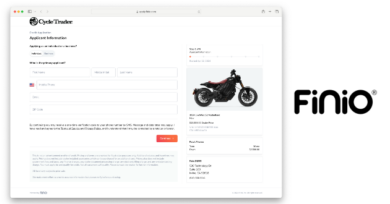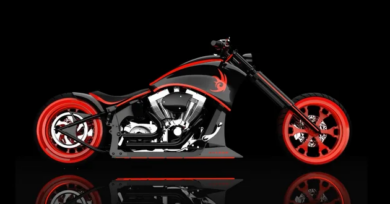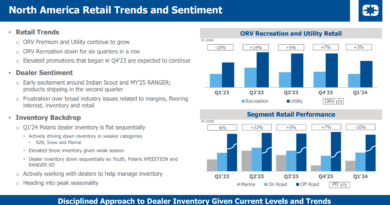Features
How UTVs are impacting ATVs – July 3, 2006
Dealers from across the nation are noticing a bigger impact from utility vehicles (UTVs) on ATV sales, which appear to be down slightly or at best flat this year.
That’s some of the findings of a national survey of 150 dealers conducted for Powersports Business magazine. Other key findings in the wide-ranging survey by Power Products Marketing include:
The annual survey of ATV sales in the United States questioned dealers from more than 40 states and included single-line and multi-line dealerships, with the latter representing the overwhelming majority.
Perhaps the biggest change in the 2006 survey compared to last year’s is the perception dealers have of utility vehicles and their impact on ATV sales. This year, nearly 10 percent of the dealers believe UTVs impact ATV sales. Only 2 percent were of the same mind the previous year.
“All of a sudden powersports dealers who sell ATVs are noticing more guys are opting for utility vehicles,” said David Crocker, senior partner for Power Products Marketing.
Crocker believes the 10 percent total by dealers is too high, believing lost ATV sales to UTVs have gone from about 3 percent last year to 5 percent this year.
What’s causing the increasing number of migrations from ATVs to UTVs?
The survey findings point to a theory that more hunters and farmers are opting for the side-by-side vehicle. Dealers surveyed in 2005 said nearly 21 percent of their consumers were using their vehicles primarily for hunting and 22 percent were primarily using it for farming. This year, those numbers decreased significantly, with only 10 percent being hunters and 17 percent being farmers.
“We’ve seen a huge shift to hunting in utility vehicles in the last year,” Crocker said. “A huge shift. It went from about 7 percent of the industry to about 10 percent as far as utility vehicle application.”
John Tranby, Arctic Cat’s marketing and communications manager, hasn’t seen a huge shift in hunters opting for UTVs. “We still have a huge percentage of our (ATV) guys that are whitetail (deer) hunters,” he said.
But Tranby wasn’t surprised at dealers’ increased perception that utility vehicles are taking more sales away from potential ATV buyers.
“UTV sales, of course, are doing really well. They’re taking it from somebody,” he said. “Obviously the guy buying a UTV has a higher income and has private land to drive it on, which would indicate that there is some validity that these guys are switching over to those vehicles from ATVs.”
Rod Lopusnak, Suzuki’s ATV operations manager, agrees, noting that Suzuki’s surveys have shown “in the big bore category, the utility vehicle sales are stealing a little bit with more of the older customer.”
But Lopusnak hasn’t seen a big migration of hunters and farmers moving from ATVs to UTVs. He noted that Suzuki’s ATV utility sales grew by 10,000 last year primarily due to the introduction of the King Quad.
Surveyed dealers believe a greater number of new ATV buyers are primarily using their vehicles for home utility purposes — 35 percent in 2006 compared to 21 percent the prior year.
Dealers also are reporting reduced sales of used ATVs, with about 8 percent of sales being used vehicles in comparison to nearly 11 percent the previous year.
Inventory has not changed greatly, however. Dealers are reporting essentially the same amount of new inventory this year — about 3 months on hand — as 2005 and slightly less used inventory — 0.9 months on hand compared to 1.3 in 2005.
The percentage of first-time buyers also has not changed much, with dealers reporting about 30 percent. That’s below the 40-percent first-time buyer figure that Arctic Cat has, Tranby said.
Dave Crocker is a senior partner for Power Products Marketing, a market research firm based in Minneapolis, Minn. Crocker can be contacted at 952-893-6870 or at dcrocker@powerprods.com




